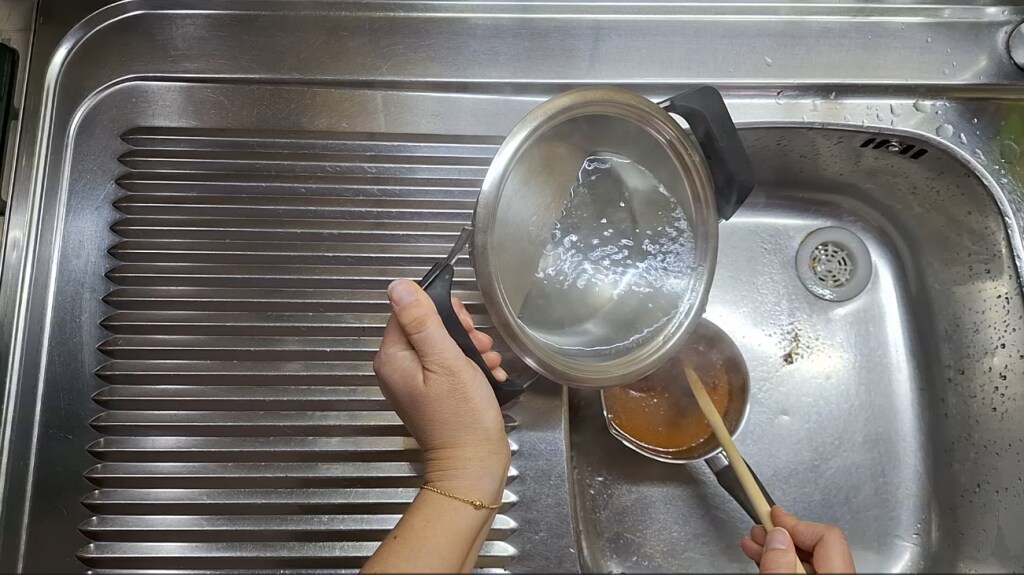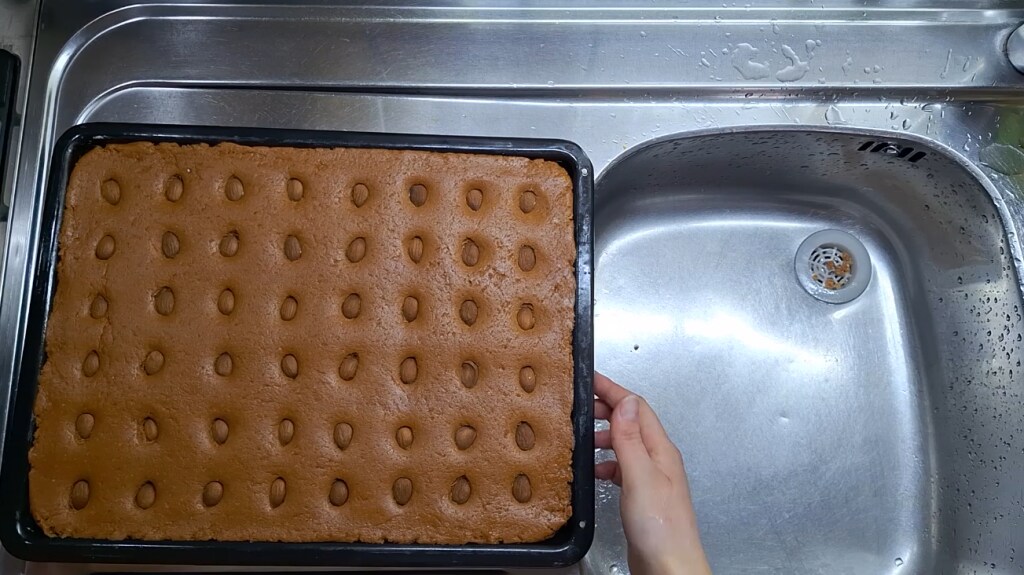The Calabrian Stomatico is a typical dessert of the Calabrian tradition, especially from the Reggio area. This dry biscuit, with its amber color and irresistible aroma, is a simple dessert to prepare and perfect to enjoy at the end of a meal, just like a digestive.
Its name has ancient origins dating back to the Greek domination in Calabria (between the 8th and 3rd centuries BC), deriving from the Greek term stoma (“mouth”) or, more likely, from a distortion of “stomachico”, highlighting its recognized digestive properties thanks to the spices.
The Stomatico is a PAT (Traditional Agri-food Product), a recognition that certifies its authenticity and long history. It is traditionally prepared for festivities, especially during the Christmas period, but thanks to its long shelf life, it can be enjoyed all year round, perhaps accompanied by a glass of sweet fortified wine or almond milk.
Today I will show you how to prepare it with my recipe, following the traditional procedure of caramel and double cooking to achieve a dry and crunchy result.

- Difficulty: Medium
- Cost: Economical
- Rest time: 15 Minutes
- Preparation time: 20 Minutes
- Portions: 1 Baking Tray
- Cooking methods: Electric Oven, Boiling, Stove
- Cuisine: Italian
- Seasonality: All seasons
Ingredients for a 12×16 inch tray
- 1 kg All-purpose flour
- 1 1/4 cups Sugar (For caramelizing)
- 1 cup Water
- 1 1/4 cups Sugar (in the dough)
- 1 packet Baker's ammonia
- 1/2 cup Olive oil
- 1 teaspoon Cinnamon powder
- 1 teaspoon Cloves
- 7 oz Almonds (For garnishing)
- 1 egg (optional* for brushing)
Tools
- Pot Small size
- Wooden spoon
- Bowl
- Baking tray approx. 12 x 16 inches
- 1 Brush for food
- 1 Knife
- 1 Rolling pin
Preparation
Start by placing 1 1/4 cups of sugar in a large saucepan. Heat on medium-low flame and stir constantly with a wooden spoon until the sugar turns amber and starts to foam on the surface. Once ready, turn off the heat and slowly add 1 cup of boiling water, continuing to stir
⚠️ Safety Note: I recommend adding the water in the kitchen sink, as the caramel reacts violently. Be very careful not to burn yourself.
Let the caramel cool.
In a large bowl, place the all-purpose flour, the remaining sugar, the olive oil, a packet of baker’s ammonia, a teaspoon of cinnamon powder, and a teaspoon of ground cloves.
Mix all the ingredients well. At this point, slowly add the cooled caramel, little by little, and continue to mix until you obtain a thick and homogeneous dough.
You may need to add a few drops of lukewarm water to achieve the right consistency.
Prepare a baking tray (approximately 12 x 16 inches) by greasing the surface with olive oil or butter or using parchment paper.
Pour the dough into the tray and level it using an empty glass bottle of tomato sauce or a rolling pin, covering the dough with parchment paper because it might be slightly sticky, until you obtain a layer about 3/4 inch high.
Arrange the almonds in rows on the surface, making a light pressure to embed them in the dough.
Preheat the oven to 355°F. Brush the surface with the previously beaten egg if desired (I prefer without).
Bake the tray and let it cook for about 35 minutes, until the stomatico is golden. Once cooked, remove it from the oven and let it cool a bit, then cut it into rectangular or square slices.
After cutting the stomatico, arrange the cookies turned on one side on the baking tray and bake again at 212°F for about 10 minutes or more, to make them crunchier. Remove from the oven, let them cool completely, and the dessert is ready to be enjoyed!
The Calabrian Stomatico is a simple yet traditional dessert, perfect for those who love genuine flavors and the sweetness of homemade cookies. Try this recipe and immerse yourself in the authentic taste of Calabria!

Tips
Store it in an airtight container to keep it fresh longer. You can also prepare it in advance, as it improves over time.
FAQ – Calabrian Stomatico
Can I make it without ammonia?
Ammonia is a crucial ingredient for achieving the right consistency of the dessert, so it’s best not to omit it.
How do I make it crunchier?
Slightly increase the cooking time during the second phase at 212°F, and you’ll get crunchier cookies.

